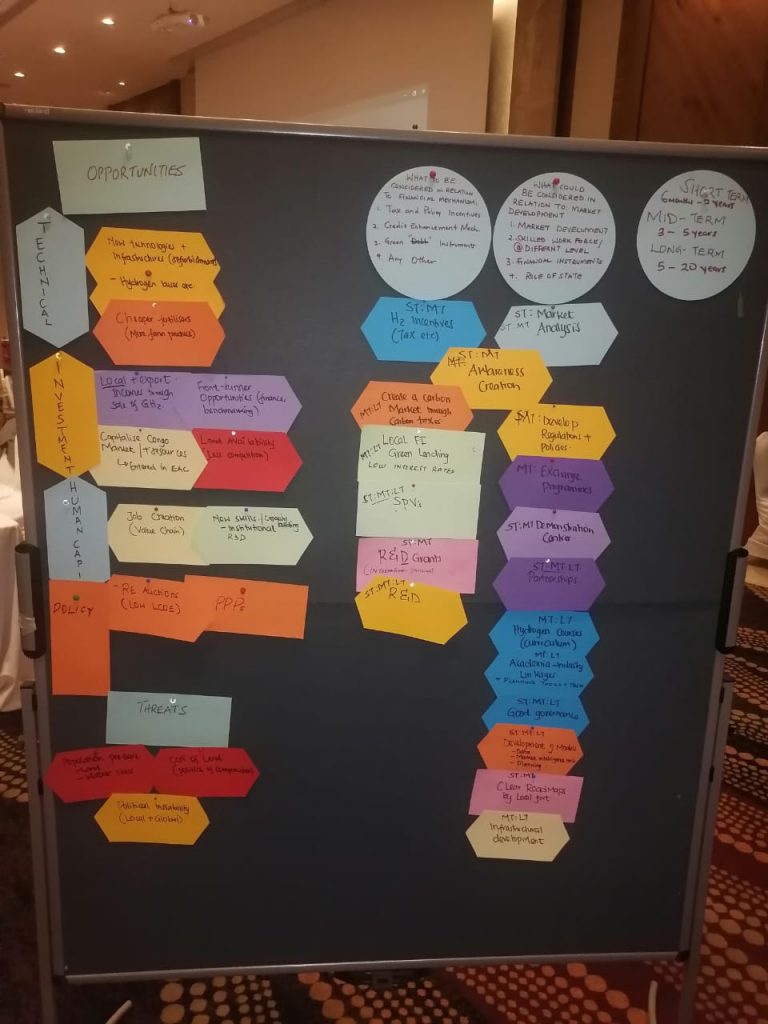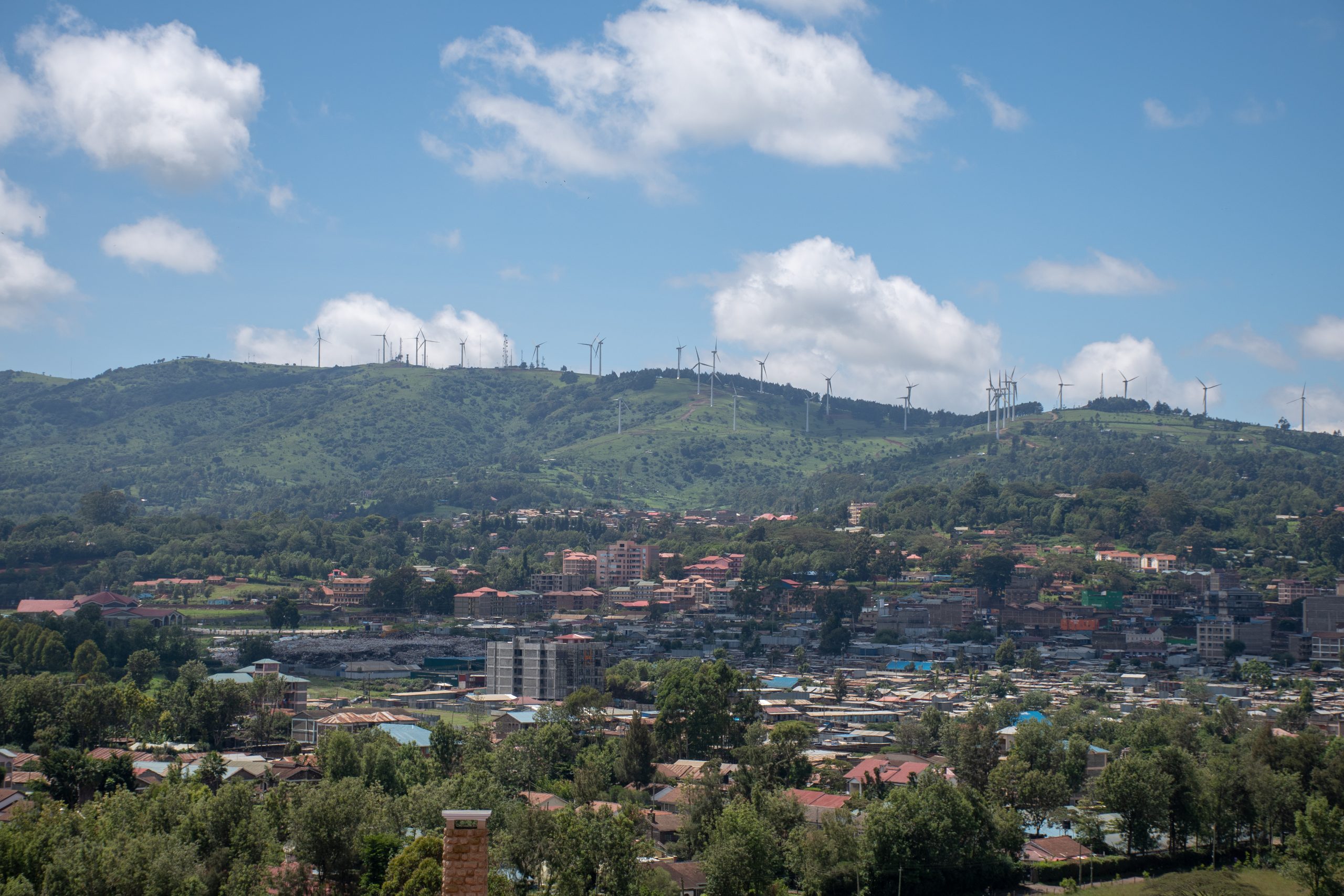Over 90 % of Kenya’s electricity mix is generated from renewable energy sources – mainly geothermal, hydro, wind and solar. The installed capacity currently stands at 2,956 MW with a peak demand of 2,036 MW as of November 2021. There has been increased share of variable renewable energies (particularly solar and wind) in recent years, whose intermittent nature continues to pose challenges to the system operator.
Kenya’s updated Least Cost Power Development plan (2020 – 2040) expects additional renewable energy power plants to be developed, with even higher shares of variables planned. Efforts to explore advanced energy storage technologies at the lowest cost are of keen interest. Additionally, the Kenyan government demonstrates a commitment towards a net zero economy by 2050 in its long-term strategy currently under development.
The strategy identifies investments in green technologies as a prerequisite to achieving a climate-friendly growth while Kenya strives to achieve its economic development blueprint at the same time. A recently concluded baseline study by the Ministry of Energy of Kenya in partnership with the German Development Cooperation on the potential for green hydrogen in Kenya highlights multiple opportunities in various industrial pathways.
Lessons learned from the Renewable PtX Training in Kenya
In March 2022, partners from Kenya’s Green Hydrogen Working Group participated in a three-day hybrid training on Renewable PtX organised by the PtX Hub Berlin. The training, coupled with a transfer workshop on the third day, aimed at creating awareness on the fundamentals of PtX technologies, sustainability, economics, and related policies. The participants highlighted green hydrogen as an input for the production of green ammonia as one potential PtX pathway for Kenya. As a country whose GDP is still largely driven by the agricultural sector, the possibility of PtX to locally produce fertiliser is of particular interest. Green ammonia could be produced at competitive costs, as global prices have been more and more exacerbated by the ongoing geopolitics of energy.
In March 2022, partners from Kenya’s Green Hydrogen Working Group participated in a three-day hybrid training on Renewable PtX organised by the PtX Hub Berlin. The training, coupled with a transfer workshop on the third day, aimed at creating awareness on the fundamentals of PtX technologies, sustainability, economics, and related policies. The participants highlighted green hydrogen as an input for the production of green ammonia as one potential PtX pathway for Kenya. As a country whose GDP is still largely driven by the agricultural sector, the possibility of PtX to locally produce fertiliser is of particular interest. Green ammonia could be produced at competitive costs, as global prices have been more and more exacerbated by the ongoing geopolitics of energy.
Beyond fertiliser production, the training provided the space for the partners to jointly deliberate on other promising opportunities for Kenya, considering its strengths and weaknesses. The pathway to create local markets and value chains by stimulating demand for high-quality PtX materials such as green steel, rather than relying on trading hydrogen as an export commodity, was of particular interest.
Although Kenya has the advantage of high percentages of renewable energy in its generation mix, the current cost of electricity is uncompetitive to drive commercialisation of green hydrogen production via electrolysis, since electricity accounts for a significant proportion of operational costs in green hydrogen production. Instead, an electricity cost reduction of at least 80% in the long-term is recommended in order to achieve competitiveness in comparison to grey and blue hydrogen. Hence, there is a need for Kenya to analyse and determine its projected levelised costs of electricity for when green hydrogen is modelled into the system and how this can become cost competitive.
The workshop participants further identified fiscal and policy instruments such as a transition to renewable energy auction markets or tariff restructuring to introduce off-peak tariffs targeting bulk electricity consumers at industrial and processing zones as some of the measures to be explored. Other considerations across the green hydrogen value chain may act as catalysts investment in direct air capture rather than using carbon captured from industrial emissions, the former of which would significantly reduce production costs and critically assessing the water stress situation in the country.

The transfer workshop concluded with an ad-hoc SWOT analysis of Kenya’s PtX future. The participants agreed on the need to first develop a National Green Hydrogen Strategy, borrowing on lessons from countries such as Chile. There, preparational activities to develop a roadmap and establish the foundation on which the technology’s direction now rides took approximately 5 years. It is therefore imperative to start now. A strategy will provide direction on investments, market development, policy instruments, and infrastructure required to grow Kenya’s green hydrogen economy. It will also outline the country’s priorities in the short-, medium- and long-term, thereby positioning Kenya as an investment hub for the development of renewable PtX and green hydrogen.
